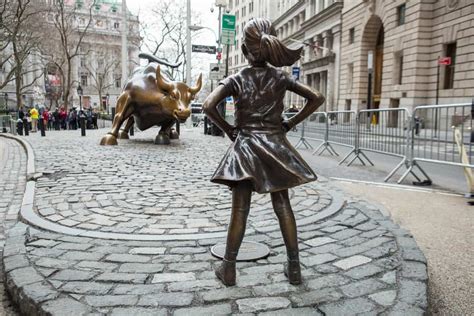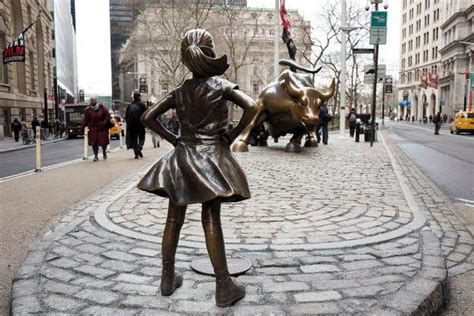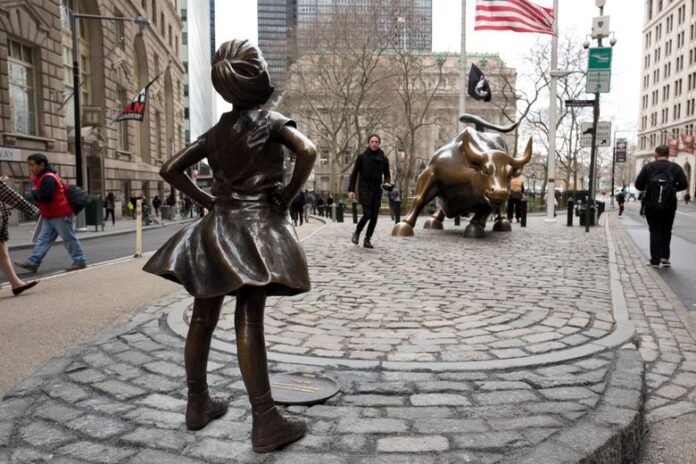The Charging Bull statue, a symbol of strength, resilience, and financial optimism, has become one of the most recognizable pieces of urban art in the world. Created by Italian artist Arturo Di Modica, this iconic bronze sculpture was surreptitiously installed in New York City’s Financial District in 1989. Since then, it has not only captured the imagination of millions but has also sparked discussions on its cultural significance and the power of public art. This article delves into the history, symbolism, and impact of the Charging Bull, exploring its role in modern sculpture and its lasting influence on urban landscapes.
gamesfats.com will take you through an extensive exploration of this topic.
1. History and Creation of the Charging Bull Statue
The Charging Bull statue was born out of a bold artistic vision by Arturo Di Modica, an Italian-American sculptor who sought to embody the spirit of economic resilience and strength following the 1987 stock market crash. Di Modica self-funded the project, spending over $350,000 of his own money to create the 7,100-pound bronze sculpture.
Completed in late 1989, the statue was designed to capture the bullish optimism of a recovering market, symbolizing aggressive financial optimism and prosperity. In the early morning hours of December 15, 1989, Di Modica and a group of friends illegally installed the Charging Bull in front of the New York Stock Exchange as a Christmas gift to the people of New York City.
Although the statue was initially removed by authorities, public outcry and media attention led to its relocation to Bowling Green, where it stands today. The Charging Bull quickly became a beloved landmark, embodying not just financial vigor but also the spirit of defiance and the power of public art. Its creation story remains a testament to the artist’s determination and the enduring impact of guerrilla art in shaping urban culture.

2. Artist Arturo Di Modica’s Inspiration and Vision
Arturo Di Modica’s inspiration for the Charging Bull came from a deep desire to uplift the spirits of the American people after the 1987 stock market crash. As an immigrant who had achieved success in New York, Di Modica felt a strong connection to the city and its people. He wanted to create a symbol of hope and resilience that would inspire confidence during uncertain economic times. The image of a powerful bull, charging forward with unstoppable energy, perfectly encapsulated his vision of a nation capable of overcoming adversity.
Di Modica’s vision extended beyond just a financial symbol; he saw the Charging Bull as a broader representation of the American spirit—strong, determined, and unyielding. This drive led him to fund the entire project himself, taking on the immense financial burden and dedicating two years of his life to bringing the sculpture to life.
The creation of the Charging Bull was an act of artistic defiance. By installing it without permission in the heart of the Financial District, Di Modica sought to challenge the conventions of public art and engage the community directly. His vision was not just to create a beautiful sculpture but to make a bold statement about the power of art to inspire and provoke thought, especially in times of crisis.

3. Installation and Initial Reception in New York City
In the early hours of December 15, 1989, Arturo Di Modica and a team of friends installed the Charging Bull in front of the New York Stock Exchange without any official authorization. This guerrilla-style placement was intended as a surprise Christmas gift to the people of New York City, symbolizing hope and strength in the wake of the 1987 stock market crash. The massive bronze sculpture, weighing over 7,000 pounds, appeared seemingly overnight, capturing the public’s imagination and immediately drawing attention.
Initially, city authorities were not pleased with the unapproved installation. The statue was quickly removed, but public outcry and the media’s fascination with the story prompted city officials to reconsider. Within days, the Charging Bull found a new, permanent home at Bowling Green, where it still stands today.
The statue’s bold arrival on the scene sparked widespread interest and debate. Many New Yorkers and visitors were captivated by its energy and symbolism, seeing it as a powerful statement of resilience and a striking addition to the urban landscape.

4. Symbolism and Cultural Significance
The Charging Bull quickly evolved into a powerful symbol with multiple layers of meaning. At its core, the statue represents strength, determination, and the relentless spirit of progress, embodying the bullish optimism that drives financial markets. For many, it symbolizes the resilience and vigor needed to overcome economic hardships, making it an emblem of recovery and prosperity in the face of adversity.
Beyond its financial connotations, the Charging Bull has also come to represent the broader American spirit—tenacious, bold, and unyielding. Its placement in the heart of the Financial District underscores its role as a guardian of Wall Street, standing as a testament to the city’s—and the nation’s—capacity to push forward regardless of challenges.
Over time, the statue has transcended its initial context, becoming an icon of urban art and a subject of countless interpretations. It has inspired a sense of public ownership, with people from all walks of life finding personal meaning in its powerful stance. The Charging Bull continues to be a cultural landmark, symbolizing the enduring spirit of New York City.
5. Impact on Wall Street and Financial District
The Charging Bull’s impact on Wall Street and the Financial District has been profound, both as a symbol and as a physical presence. Installed at the epicenter of global finance, the statue has become synonymous with Wall Street itself, representing the aggressive optimism that drives the financial markets. For traders, investors, and financial professionals, the Charging Bull is more than just a sculpture; it embodies the market’s potential for growth, the power of risk-taking, and the relentless pursuit of success.
The statue has also played a significant role in shaping the identity of the Financial District. It draws thousands of visitors daily, transforming the area into a major tourist destination. The Charging Bull has become a must-see attraction, not only for those interested in finance but for anyone looking to capture a piece of New York City’s dynamic spirit.
Moreover, the Bull’s presence has sparked discussions about the role of public art in financial spaces, challenging the typically sterile environment of corporate districts. Its raw energy contrasts sharply with the surrounding skyscrapers, adding a sense of vitality and defiance to the otherwise formal atmosphere of Wall Street. The Charging Bull remains a powerful and enduring symbol of the financial world, continually influencing the perception and culture of the Financial District.
6. Public and Media Reactions Over the Years
Over the years, the Charging Bull has elicited a wide range of reactions from the public and media, solidifying its status as one of New York City’s most iconic symbols. From the moment it appeared in the Financial District, the statue captivated the public, drawing immediate attention and sparking conversations about its meaning and impact. Tourists and locals alike flocked to the sculpture, often touching it for luck, particularly its horns and nose, which have become polished over time from constant handling.
The media’s coverage of the Charging Bull has been extensive, contributing to its global recognition. Initially, the story of its unauthorized installation and subsequent relocation made headlines, adding to the statue’s mystique. Over time, the media has continued to explore its significance, often featuring it in reports about Wall Street and the broader economy.
Public reactions have varied, with some seeing the Bull as a powerful symbol of strength and optimism, while others have critiqued it as a representation of unchecked capitalism. Despite differing opinions, the Charging Bull has maintained its position as a beloved and enduring fixture in New York City. Its presence has sparked discussions on art, finance, and the intersection of public space and symbolism, making it a subject of ongoing fascination and debate.
7. Controversies and Vandalism Incidents
The Charging Bull has not been without its share of controversies and vandalism incidents since its installation. Its provocative nature and high-profile location have made it a target for both political statements and acts of defiance. In 1999, the statue was one of the focal points of a protest against corporate greed, during which it was spray-painted with graffiti. This act of vandalism highlighted the ongoing tension between the symbol of financial optimism and critiques of Wall Street’s excesses.
Another notable incident occurred in 2011 during the Occupy Wall Street movement. Protesters used the statue as a focal point for their demonstrations against economic inequality, often surrounding it with signs and banners. While these actions were largely peaceful, they underscored the Bull’s role as a lightning rod for public sentiment regarding financial and social issues.
In addition to these high-profile events, the statue has faced occasional acts of vandalism, including attempts to deface or damage its surface. Despite these incidents, the Charging Bull remains a resilient symbol, continuing to stand as a powerful emblem of strength and determination amidst the controversies that swirl around it.
8. Comparisons to Other Iconic Urban Sculptures
The Charging Bull holds a unique place among iconic urban sculptures, distinguished by its symbolic representation of financial strength and optimism. Its impact is often compared to other landmark urban sculptures, such as Chicago’s Cloud Gate, commonly known as “The Bean,” and San Francisco’s “The Embarcadero.”
While Cloud Gate reflects a sense of contemporary artistry and serves as a mirror to the cityscape, emphasizing reflections and public interaction, the Charging Bull communicates a specific economic sentiment through its imposing presence. Unlike Cloud Gate, which invites introspection and personal connection through its reflective surface, the Charging Bull exudes a raw, dynamic energy aimed at symbolizing resilience and prosperity.
San Francisco’s “The Embarcadero,” with its maritime theme, and other statues like the “Fearless Girl” placed in front of the Charging Bull, also offer contrasts in their thematic focus. The “Fearless Girl” was installed as a counterpoint to the Bull, representing female empowerment and challenging traditional notions of power and strength. These comparisons highlight how urban sculptures can reflect diverse aspects of city life and culture, each with its own unique message and influence. The Charging Bull’s legacy, while distinct, aligns with this tradition of using public art to engage and provoke thought.
9. Current Status and Future of the Charging Bull Statue
Today, the Charging Bull remains a prominent and cherished landmark in New York City, situated at Bowling Green Park. Its enduring appeal continues to attract millions of visitors annually, making it one of the most photographed sculptures in the world. The statue’s presence has solidified its role as a symbol of financial optimism and urban resilience.
As for the future, the Charging Bull is expected to maintain its status as an iconic piece of public art. Its cultural significance and popularity ensure that it will likely continue to be a focal point of both tourism and media coverage. However, ongoing debates about the statue’s symbolic meaning and its role in the broader context of urban art may influence future discussions and potential modifications. The Charging Bull’s resilience, both physically and symbolically, suggests that it will remain a powerful representation of New York City’s dynamic spirit, adapting to new social and economic contexts while retaining its core symbolism of strength and determination.
The Charging Bull stands as a testament to the enduring power of public art to capture the spirit of a city and its people. From its bold, unauthorized installation to its iconic status today, the statue embodies resilience, optimism, and financial vigor. Its impact on Wall Street and the Financial District, along with its role in sparking conversations and controversies, underscores its significance in urban culture. As it continues to inspire and provoke thought, the Charging Bull remains a powerful symbol of strength and determination in New York City.
gamesfats.com

